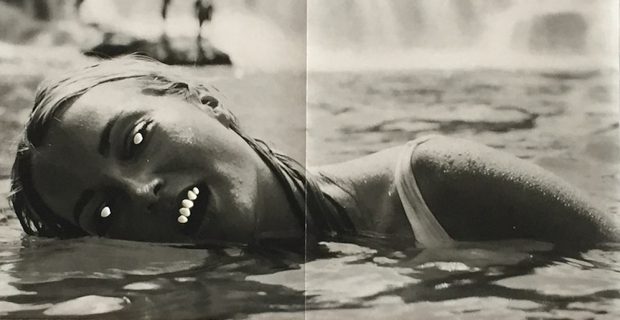Few artists have made their breakthrough as forcefully as Lotta Antonsson did while still a student at Stockholm’s University of Arts, Crafts and Design in 1991. The series of photographs Take it as a man showed a woman in a classic soft porn pose with the images run through a photocopier to attain their fuzzy, almost rasterised look, referring to the tabloid format of newspapers. Even this early in her career, the elements that came to signify Antonsson can clearly be seen; the way she uses humour, irony and objectivity to question the male gaze and the construction of woman as object, often in the form of photographs in which her own body is the medium. However, here she is also exploring photography as a material and means of expression in a time in which the technology is both freely available and easily manipulated but has historically had an important function as a bearer of truth.
Lotta Antonsson is one of the most important figures at the forefront of Swedish contemporary photography and has attracted major success internationally for almost 30 years. For a long time she has been working both from Berlin and her studio in Halland. It was her upbringing in Varberg and the creative circles in Gothenburg with artists including Tom Benson, Annika von Hausswolff, Lola Möller, Jean Louis Huhta and Freddie Wadling that saw her choose the career of an artist at a time when the focus was on staged photography but often in the form of collage with elements of advertising, painting and other images.
In the exhibition at Västerås konstmuseum focus is placed on the spatial context – the museum’s rooms and the experience of the interaction between the works and the space, the movement of the viewer through the exhibition and the location-specific parameters of the space. A holistic experience that includes older and new works in which photographs and collage produced by the artist herself are now integrated in a wider context with found items, mirrors, natural materials and “reference material” from the museum’s own collection of books, pictures and texts.
The exhibition is produced by Hallands Konstmuseum.

